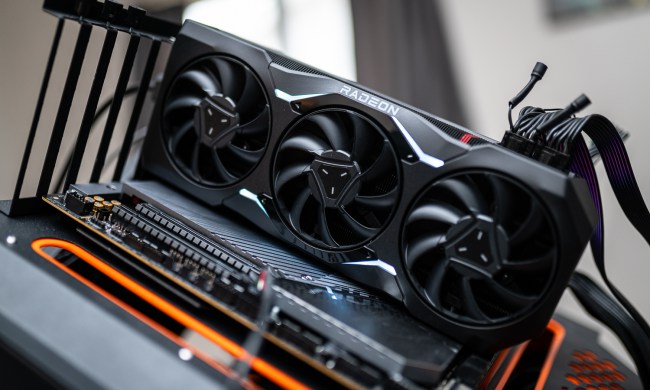ASRock is officially joining the graphics card market with the introduction of its Phantom Gaming series. They are based on AMD’s previous-generation Radeon RX 500 Series “Polaris” cards, and not the more recent Radeon RX Vega models based on AMD’s latest “Vega” GPU design. Overall, there are currently four models in the entire Phantom Gaming family ranging from the RX 550 to the RX 580.
Have a look:
| RX580 8G OC | RX570 8G OC | RX560 2G | RX550 2G | |
| Cores: |
2,304 |
2,048 |
896 |
512 |
| Base speed: |
1,380MHz |
1,280MHz |
1,149MHz |
1,100MHz |
| Overclocked: |
1,435MHz |
1,331MHz |
1,194MHz |
1,144MHz |
| Silent mode: |
1,324MHz |
1,228MHz |
1,103MHz |
1.056MHz |
| Memory: |
8GB GDDR5 |
8GB GDDR5 |
2GB GDDR5 |
2GB GDDR5 |
| Memory speed: |
8,320MHz (OC) |
7,280MHz (OC) |
6,240MHz (OC) |
6,240MHz (OC) |
| Memory bus: |
256-bit |
256-bit |
128-bit |
128-bit |
| Ports: |
3x DisplayPort 1.4 |
3x DisplayPort 1.4 |
1x DisplayPort 1.4 |
1x DisplayPort 1.4 |
| Power connector: |
1x 8-pin |
1x 8-pin |
n/a |
n/a |
| Size (inches): |
10.97 x 4.99 x 1.65 |
8.47 x 5.07 x 1.71 |
6.67 x 5.15 x 1.65 |
6.67 x 5.15 x 1.65 |
The RX 580 and RX 570 models rely on two cooling fans whereas the RX 560 and RX 550 models only have one. Regardless of the model, ASRock says the fans feature a double ball bearing design for a smoother spin and a lifespan between 50,000 and 100,000 hours. ASRock claims this design increases the fan lifespan by up to 40 percent compared to your typical blower design.
Other ingredients thrown into the new cards include a “premium” copper base, nano thermal paste, and an anodized aluminum heatsink. The heat pipes feature a composite design combining powder sintered and grooved interfaces together to increase cooling capacity by up to 30 percent.
Included with all four cards is the company’s Phantom Gaming Tweak utility. With this tool, gamers can tweak the fan speeds, the core clocks, memory frequency, and more. This is also where gamers switch between the three pre-set modes listed in the chart. According to the company, the utility provides enough voltage configure options to push the cards to their limits. But gamers can also tweak the cards using AMD’s Radeon Wattman tool baked into the Radeon Settings software.
“ASRock finally expand into the graphics card field,” ASRock CEO LL Shiu said in a statement. “We are happy and proud to team up with AMD, our strong and reliable partner, and of course we look forward to bringing out more interesting and competitive products in future.”
ASRock began teasing its eventual entry into the graphics card market last week with a video uploaded to YouTube hinting to its Phantom Gaming brand. Rumors began circulating in early March stating that ASRock would enter the GPU market and mainly focus on AMD-based products. But the company’s motives may not be entirely gaming focused given the momentum of cryptocurrency mining and the fast sales of supporting graphics cards.
The Phantom Gaming series is expected to hit shelves in April for unknown prices.



